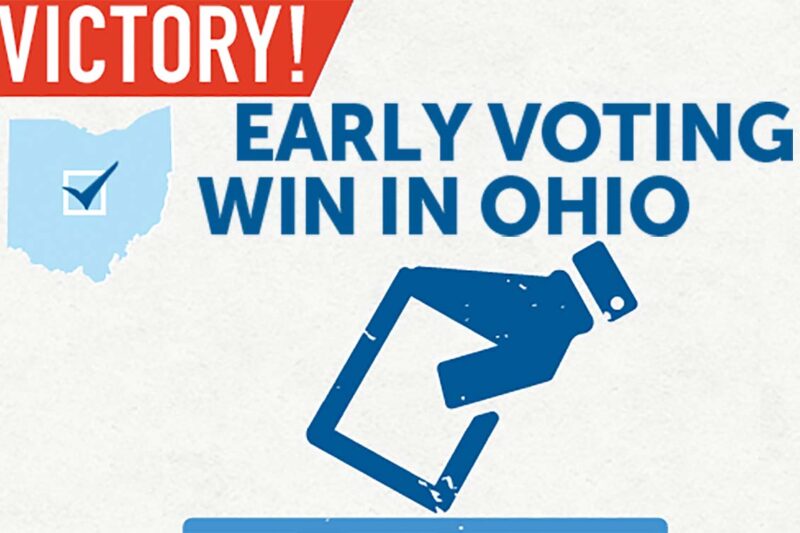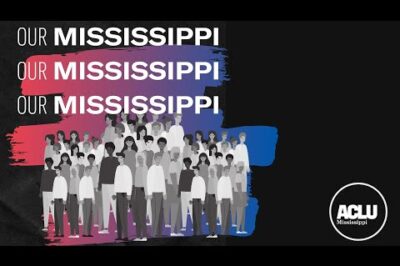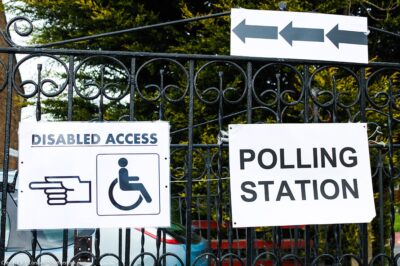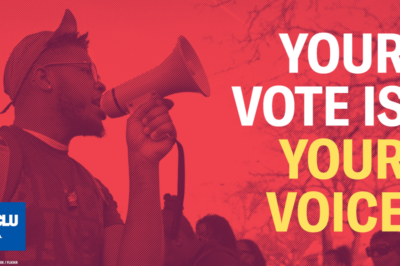Federal Judge Sees Through Ohio's Bogus Arguments For Cutting Early Voting


While it may be technically possible for there to be a sufficiently good reason to cut early voting – one that isn’t just a sorry excuse for voter suppression – we haven’t seen it yet.
Yesterday a federal judge in Ohio agreed, ruling that the state’s gratuitous cuts to early voting must be restored for the upcoming midterm elections, precisely because all of Ohio politicians’ TV-made talking points about fraud, cost, or “uniformity” – the same set of talking points being used by politicians around the country – were “relatively hollow” and “not necessarily supported by logic.” When waves of political noise crash against the rocky shores of logic, logic usually wins out.
As the court recognized, after disastrously long lines in 2004 disenfranchised thousands of Ohio voters, the state created a 35-day early voting period, including a week in which it was possible to register and vote on the same day (“same-day registration”). Since then, hundreds of thousands of Ohioans have taken advantage of these opportunities because of the flexibility they allow. Lower-income voters have used them to cast votes on evenings and weekends, often because of difficulties taking unpaid time off of work to vote or arranging for childcare during the day. African-American churches have also seized on weekend voting, organizing transportation to the polls after Sunday services.
Ohio politicians did not like what they saw, and in early 2014, they slashed into this early voting period. But they did not simply reduce the number of early voting days – they went out of their way to target the early voting days and times that poor and African-American voters used the most: Sundays, evenings, and same-day registration.
As one politician put it, “I guess I really actually feel we shouldn’t contort the voting process to accommodate the urban – read African-American – voter-turnout machine.”
Because Ohio could not give any good reason for these cutbacks under the harsh light of judicial scrutiny, the federal court ruled that these cuts to early voting, in disproportionately targeting poor and African-American voters, violated both the U.S. Constitution and the Voting Rights Act.
The court also noted that when constitutionally unacceptable conditions – such as the widespread disenfranchisement of Ohio voters in 2004 – leads to the creation of methods of democratic participation upon which hundreds of thousands of its citizens (especially its most vulnerable citizens) come to rely, the state cannot suddenly eliminate that form of participation without a good reason.
That is why the howls that you hear from Ohio politicians and armchair commentators in response to this decision – emphasizing Ohio’s still-large number of early voting days, suggesting that Ohio can never reduce its early voting period, and faux-worrying that this decision means that every single state is now constitutionally required to have X many days of early voting – can be ignored.
Taking away an existing right that thousands have depended on is worlds of difference from not providing a method of participation that no one in the state has ever used. And nothing suggests that Ohio can never reduce its early voting period – they just need to come up with a good reason before doing so.
As the court explained, “despite the expansiveness of Ohio’s voting system, the weakness of the offered justifications render them essentially arbitrary action when viewed against the burdens they impose on groups of voters. Such action is prohibited by the Equal Protection Clause.”
For Ohio voters, yesterday’s ruling means that the opportunity to register and vote on the same day and the first week of early voting has been restored. Absentee and early in-person voting will begin on September 30 rather than October 7. There will be multiple Sundays – October 26 and November 2 – for early in-person voting. From October 20-31, there will also be weekday evening hours for early in-person voting, and counties that want additional early in-person voting hours will be allowed to offer it.
For all of us, this means that this judge saw cuts to early voting for what they are: an opportunity for politicians to choose their voters.
The battle, however, is not over yet. In North Carolina, a judge ruled that cuts to early voting could continue. But now we celebrate for the people of Ohio who will not have politicians getting in the way of their right to vote.
Learn more about voter suppression and other civil liberty issues: Sign up for breaking news alerts, follow us on Twitter, and like us on Facebook.




